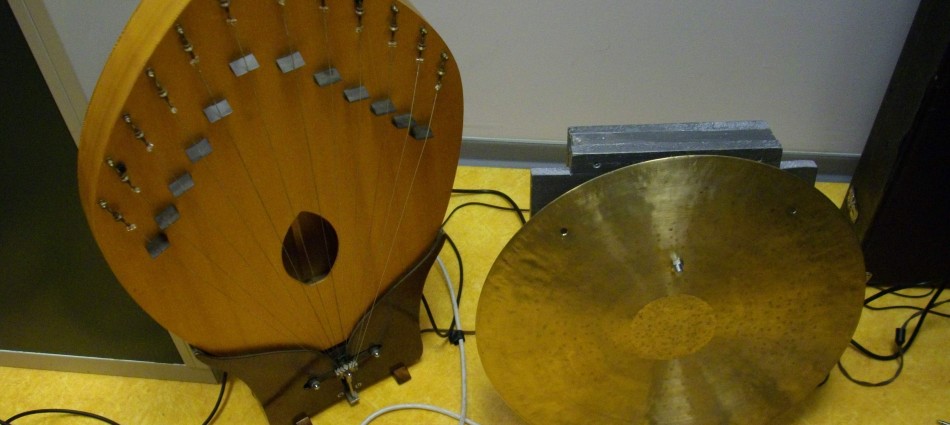
Nadia Ratsimendresy, Carl Faia en résidence en octobre 2011
Invented in 1928 by
Maurice Martenot, the Ondes
Martenot is one of the first examples of a sound synthesizer. Its unique status – electronic instrument with a strong acoustic element (control of dynamics, phrasing, tuning, timbre, sound diffusion and vibrato) has aroused the interest of many composers. The repertoire has been enriched by more than 2000 musical pieces. From Olivier Messiaen to Tristan Murail, through Darius Milhaud, André Jolivet, Jacques Brel, Radiohead, a very large stylistic repertoire has been built. What is missing in all these scores are the pieces for Ondes and electronics. This different perspective, or sound world, would seem to be a natural progression of an original instrument conceived through the unique capacity of electronics in the first place.
The instrument is a strange combination and precociously advanced application of traditional playing techniques (with the integration of vibrato through a loosely fitted keyboard) and avant-gard electronic effects (noise generator, random frequency distortions or the unique ring-on-a-string highly accurate pitch controller). Then there is the curious and rich sound diffusion available through the player’s ability to change the output timbre through speaker choice and combinations — on the fly! In fact, there are so many playing techniques and variations, a composer might feel daunted by the sheer number of possibilities the instrument offers and thus prefer to approach the instrument as a novelty or as a « simple » keyboard instrument.
Regardless of why there is little in the repertoire for Ondes and electronics, we see many angles of approach to exploit the organic capabilities of the instrument and to augment certain aspects or develop new techniques to be integrated into the instrument’s arsenal. Some of this work includes the analysis, empirical or otherwise, of the preexisting elements of the instrument. Most notably, we can gain something though the development of the original sound diffusers, or speakers, first created by
Martenot. The resonating speaker has already been subjected to this process and a more robust speaker has resulted from the experience. The main speaker has been developed in something of a more classical manner, but it too is more robust and allows us to attack the sound source in various ways. The last of the diffuser to have a re-looking will be the Palm. It is at once more delicate and sophisticated. The strings used for sympathetic vibrations are as much a liability as an asset. Different tunings can have a massive effect in the overall sound, but the resonating volume of the object leaves much to be desired. Further work is needed to redeploy this speaker in a more desirable and useful manner.
The first phase of the project in
Art Zoyd Studios will be to concentrate on the discovering, or rediscovering, of the many aspects of the instrument: inputs and outputs, analysis of signals and speakers, traditional and extended playing technics, mechanical versus electronic controls, etc. The use of computer aided treatments will be explored with the impetus on finding an unobtrusive and natural application without demanding too many manipulations by the performer of the Ondes or the computer. The aim is to create something that will augment the instruments inherent qualities, strengthen its weaknesses, as well as develop an approach that is at once organic and multi-active where the players’s gestures might control particular aspects of the overall sound and a simple computer controller will allow for quick and easy changes. Ideally, the work should lead not just to a new piece but also to a new method of approaching the instrument for future composers.
Nadia Ratsimandresy and Carl Faia


